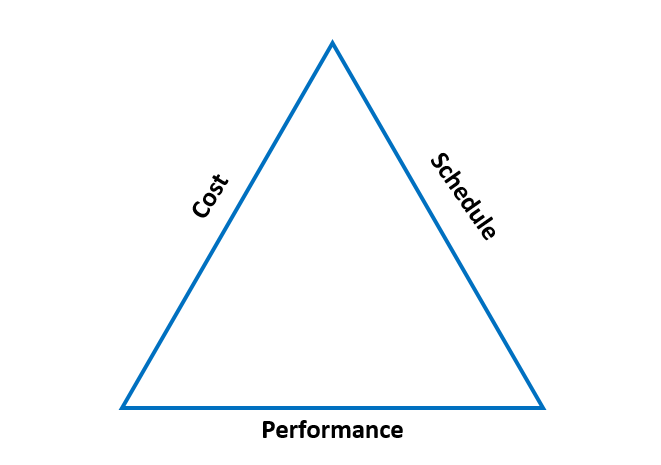A couple of days ago I had an interesting conversation that turned toward manufactured spending, with my friend, who runs the Facebook Group Travel Hacking 101.
He had shared the news about the AAdvantage program changes and asked the group whether that would lead to loyalty changes. He then followed up to say that he’ll continue to not pay for flights (I suspect, through using miles/points and cash back).
Always a cost to Manufactured Spending
My response was something to the point that there is always a cost. He ultimately responded that his only true cost was time. Time is definitely not free. There is always an opportunity cost. You could be out on the golf course, but instead you’re standing in line at Walmart. You could be working, and earning a higher per-hour rate, than you can generate via miles and points.
In Program Management, we generally measure three key programmatic metrics:
– Cost: how much did we think a program was going to cost, and how much it is trending to cost–although that may be overly simplistic.
– Schedule: how long did we think the program would take, and how long is the program trending toward taking based on delays and early completed tasks.
– Performance: is the program doing what we said it would do, is it meeting the desired goals at the start of the program.

Relationship between Cost, Schedule, and Performance
To draw the corollary to the manufactured spending points and miles game:
– Cost = out of pocket cost + time (aka how much you value your time)
– Schedule = how long do you think it will take for you to do all the steps necessary to manufactured spending, and how long did it really take you (because there is a cost to that time)
– Performance = the result of those points and miles you generated, this is impacted by internal (ability to maximize/utilize the points), and external (devaluations, award space limitations) factors.
Wrapping Up
Really my basic point is – despite all the discussions of free, nothing truly is. Normally we talk about opportunity costs, but if you just take the basic view that your time is worth some amount of money–e.g. your hourly rate, or salary broken down to an hourly rate–then manufacturing spending in turn has a cost, even if you pay yourself back with cashback; unless you’re generating so much cashback, that you can replace your hourly rate, in which case, maybe you should just manufacture spend for a living.
I got my degree in Economics and opportunity cost is one of those terms that folks think are universal. Not sure that is the case.
Several times I have seen MS/travel bloggers say they wouldn’t waste their time MS’ing for less than $100 a hour. My first thought is “if you are making $200,000 a year, why not pay for your own travel?” But your daytime pay is only one way of estimating opportunity cost.
Yes, your time has a value, but how often does someone pay you for it when you are not at work? Salaried workers don’t usually even get paid for overtime and weekends!
I presume that chasing deals/points/miles is rewarding and has a thrill value. Then the opportunity cost is a relative one. Could you be doing something more entertaining?
@Dave – Great points. I tend to associate the cost of MSing with the opportunity cost of reselling, personally, because I treat the two in the same “bucket” as my second “job”, but that could be why I haven’t been on the golf course in a couple of years..
Great point, Dave!
I agree, wholeheartedly, with the point made by Dave. And I think, in the rush to monetize everything, we forget that much of life is not paid.
When salaried employees routinely work, for free, 60 or more hours a week, while hourly employees would be paid time and a half for the same work, one sometimes wonders if being salaried is worth all that much.
When entrepreneurs work for free for months or even years, with faith that their own “hourly rate” will eventually soar, one wonders the same.
But the payback from MS is fairly immediate: buy X dollars worth of whatever, and, at the conclusion of the billing period, receive points or miles that can be used for travel or cash back.
If a significant portion of those dollars can be spent by typing CC info on a screen, all the better.
The real payback, of course, is the travel or the cash that becomes available, for very little effort. MS is not free, and it’s not effortless. But it’s CHEAP, and the payback can be priceless.
Pingback: New EY First Class Lounge, Credit Card Complexities, BA Offices around the world - Tagging Miles
That the reason I have stopped doing ms rather than doing that I am studying master which will increase my salary more permanently